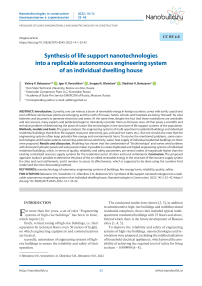Synthesis of life support nanotechnologies into a replicated autonomous engineering system of an individual dwelling house
Автор: Belozerov V.V., Voroshilov I.V., Oleinikov S.N., Belozerov Vl.V.
Журнал: Nanotechnologies in Construction: A Scientific Internet-Journal @nanobuild-en
Рубрика: Problems of using nanomaterials and nanotechnology in construction
Статья в выпуске: 1 Vol.14, 2022 года.
Бесплатный доступ
Introduction. Currently, one can witness a boom of renewable energy in foreign countries: zones with earth, coastal and even offshore wind power plants are emerging, and the roofs of houses, hotels, schools and hospitals are being "dressed" by solar batteries and by panels to generate electricity and water. At the same time, despite the fact that these installations are unreliable and rare sources, many experts and politicians begin to mistakenly consider them as the basic ones. All that poses a scientific and technical problem of determining the place of nature-like technologies in the structure of life support systems of the population. Methods, models and tools. The paper analyzes the engineering systems of multi-apartment residential buildings and individual residential buildings that deliver life support resources (electricity, gas, cold and hot water, etc.). But one should also note that the engineering systems often keep potential fire-energy and environmental harm. To resolve the mentioned problems, some nanotechnologies and Russian patents concerning autonomous electricity, water, heat supply of individual residential buildings on them were proposed. Results and discussion. Modeling has shown that the combination of "Shukhovskaya" and vortex wind turbines with domestic hydraulic panels and solar panels makes it possible to create duplicated and tripled engineering systems of individual residential buildings, which, in terms of quality, reliability and safety parameters, are several orders of magnitude higher than the existing centralized resource supply systems for the residential sector of cities and rural settlements. Conclusion. The proposed approach makes it possible to determine the place of the so-called renewable energy in the structure of the resource supply system for cities and rural settlements, and it remains to assess its effectiveness, which is supposed to be done using the Leontiev-Ford model and the retro-forecasting method.
Nanotechnology of autonomy, engineering systems of buildings, fire-energy harm, reliability, quality, safety
Короткий адрес: https://sciup.org/142231179
IDR: 142231179 | DOI: 10.15828/2075-8545-2022-14-1-33-42
Текст научной статьи Synthesis of life support nanotechnologies into a replicated autonomous engineering system of an individual dwelling house
Original article
F or more than five years, a set of rules “Engineering systems of high-rise buildings” has been in force, which require [1]:
firstly, vertical zoning of high-rise buildings, i.e. their separation by technical floors every 50 meters of height, on which engineering equipment and communications are located, secondly, automation of engineering systems of high-rise buildings to ensure the reliability and safety of their operation.
The conducted studies have shown [2, 3], in addition to administrative high-rise buildings and multifunctional residential complexes, these rules included typical multiapartment residential buildings with 25 floors and above, behind which there is the future development of Russian cities [1, 4, 5].
To improve the reliability and safety of engineering systems of high-rise buildings, nanotechnologies and innovations were proposed, including the intellectualization of household electrical appliances, which proved the possibility of achieving the required level of safety for living in them – 0.999999 [6–8].
PROBLEMS OF USING NANOMATERIALS AND NANOTECHNOLOGY IN CONSTRUCTION
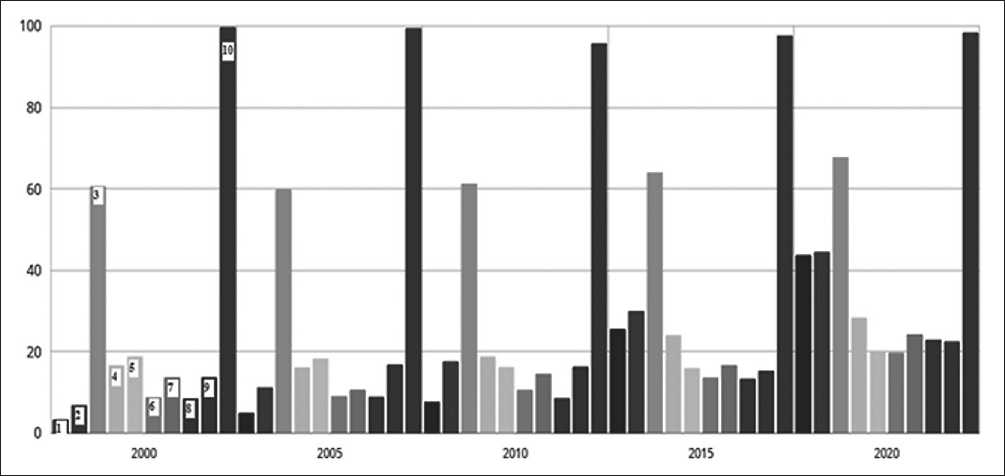
Fig. 1. Dynamics of RES electricity generation in the world in 2000–2020 (%): 1 – Great Britain; 2 – Germany;
3 – Canada; 4 – China; 5 – Russia; 6 – USA; 7 – France; 8 – Australia; 9 – India; 10 – Novegia
However, all the proposed solutions to the problems of safe life in high-rise buildings entailed significant additional costs for their construction and operation, as well as an increase in energy consumption in them [3, 7, 9]. In this connection, it was decided to return to the problems of centralization and decentralization of gasenergy-heat-water supply and wastewater disposal of buildings and structures, which can remove almost all existing problems, but requires a comparative analysis of the costs of scientific and technical work (research, design, manufacturing, testing) and construction (design, construction, installation and commissioning) [2, 10, 11].
Moreover, despite the fact that renewable energy sources (RES) are unstable, low-concentrated and periodic energy sources, many experts and politicians, of course, mistakenly begin to consider them as the basic ones, because over the past 15 years (Fig. 1), their installed capacity has increased 10 times and by the end of 2019 exceeded the output of nuclear power plants [12, 13].
As for Russia, the renewable energy industry, although it has been very actively developing in recent years, still its share is extremely small. So, for example, by 2020 wind power plants (WPP) with a capacity of 184 MW and 1.4 GW – solar power plants (SPP) were put into operation, which is less than 1% of the capacity of the entire energy system, since traditional generation still dominates in our country: 66.8% is accounted for by thermal power plants using coal and gas, 20.2% by nuclear power plants and 12.3% by hydroelectric power plants (HPPs) [14].
At the same time, in our country, mostly in rural areas, and also because of the huge undeveloped territories, construction of individual residential buildings and gasification of the rural settlements, in which these buildings are located, are also being intensively developed [10].
Therefore, taking into account domestic inventions in the field of autonomization of obtaining energy resources (electricity, water, etc.) [14–22], a scientific and technical problem arises to synthesize a decentralized system of safe life of the population, i.e. creation of an autonomous engineering system of an individual residential building (AES IRB).
METHODS, MODELS AND TOOLS
Partially, from the point of view of power supply and heating / cooling of an individual residential building, such a problem has already been solved by us and it can be argued that the currently produced water, air or infrared electric heating installations, in addition to the possibility of their independent installation and operation, have significant advantages [9, 10]:
firstly, the simplicity of control and regulation of work, by setting the required temperature (control of fuel consumption is not required), secondly, modern radiators, convectors and infrared emitters allow you to set a comfortable mode within 10 minutes after turning them on, thirdly, electric heating makes it possible to exclude explosions and fires from domestic gas leaks, which have become more frequent in recent years in Russia.
A comparative analysis of the existing methods and means of life support for individual residential buildings led to the conclusion that it became possible to consis-
PROBLEMS OF USING NANOMATERIALS AND NANOTECHNOLOGY IN CONSTRUCTION
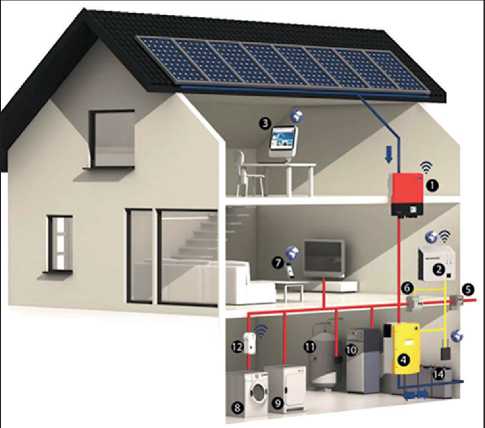
Fig. 2. Combined home heating / cooling system:
1 – Inverter; 2 – Controller; 3 – Remote control access; 4 – Battery; 5 – Electricity meter-detector;
6 – Compensator reactive power; 7 – Household electrical appliances; 8 – Washing machine;
9 – Dryer for clothes; 10 – Heat pump-vortex cooler;
11 – Electric boiler; 12 – Socket; 13 – Power grid;
14 – Router
tently increase the efficiency of the system (Fig. 3) of electric heating / cooling (electric boilers, split systems, etc.) by installing and integrating solar batteries (Fig. 2), with a wind power plant (WPP), in particular with a small-sized wind generator (Fig. 4, 5) and a source for obtaining water from the air (Fig. 6), i.e. creation of an autonomous and environmentally friendly automated engineering system of an individual dwelling house (AIS IRB) [7, 8, 10].
The weak point of electric heating systems, but quite surmountable, as studies have shown, are electric boilers, the fire hazard of which, for example, EPO-108, was reduced by its intellectualization – the introduction of thermoelectronic protection modules [9, 23], or by using an electric boiler with induction heating (Fig. 3).
This type of heating boilers has a number of advantages over traditional heating elements [9, 24]:
firstly, the complete absence of any heating elements, as well as moving and highly loaded elements that are subject to wear during operation and require periodic replacement;
secondly, the ability to operate from a low voltage and constant current power supply, which is usually unacceptable for other types of electric boilers;
thirdly, the boiler design does not contain detachable connections, i.e. the likelihood of leakage is completely excluded;
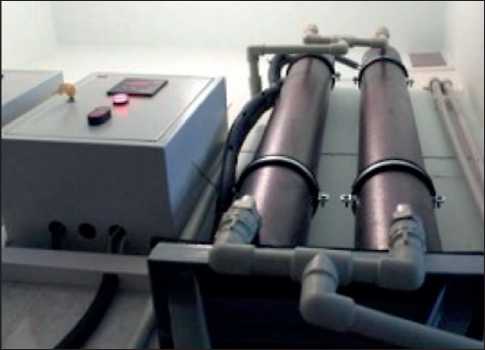
Fig. 3. External view of the installation with induction heating
fourthly, significantly faster heating to operating temperature, in comparison with any other types of heating electric boilers, and low inertia allows you to save energy due to effective control of the boiler using automation (by maintaining the temperature at a strictly specified level, i.e. when it rises, the power supply to the boiler is turned off and resumed only when the temperature drops below the one set by the user);
fifth, protection against scale formation due to the small temperature difference between the heater and the coolant, not exceeding 3oC, as well as due to high-frequency vibrations caused by eddy currents that repel salt ions from the inner walls of the pipe;
sixth, high fire resistance and electrical safety, since the heating element (core) is not electrically connected to the inductor (primary winding) directly, and the temperature difference between the core and the coolant does not exceed 30oC;
seventh, there is no need to install the induction boiler in a separate room, because it is absolutely silent, and its installation does not require the involvement of highly qualified specialists;
eighth, like any electric heater, the efficiency of such a boiler is close to 100% and does not change over the years of its operation, unlike electrode boilers and with heating elements, with an average service life of 25 years and more (depends on the thickness of metal pipes forming the core of the boiler), while no maintenance work is required with this equipment;
ninthly, it allows you to use almost any coolant in the heating system (water, antifreeze, oil, etc.), and without any preliminary preparation and replacement of the spent coolant in the system no more than once every 10 years and use for any closed heating systems, including for warm floor and for baseboard heating, because the minimum threshold for the heating agent heating temperature is 35oС.
PROBLEMS OF USING NANOMATERIALS AND NANOTECHNOLOGY IN CONSTRUCTION
Warm floors were developed almost half a century ago for livestock farms [25], therefore, the use, along with water batteries, of modern polymer structures of water heat-insulated floors ensure their safety and high reliability [26], and in the solar subsystem high indicators of reliability and safety are provided by the controller and the intellectualization of the inverter [9,12].
RESULTS AND DISCUSSION
Vane-type wind turbines with powers ranging from 1–3 kW to 5–6 MW are currently the most widespread. At the same time, hundreds of companies and firms in Europe, USA, China, Japan, India, Brazil, etc. are engaged in the production of wing-type wind turbines.
Such wind turbines generate exclusively direct current, in connection with which, like solar batteries, they are supplemented with batteries and converters (inverters) of direct current into alternating current, and due to their overall dimensions, they require special supports (Fig. 4). At the same time, the boom of VEUization has reached the point that they are beginning to be placed not only on fields and roads (Fig. 4a), but also in the sea (Fig. 4b) [13].
In Russia, the production of wind turbines is in its infancy [13, 27] and, unlike bulky vane wind generators, there are developments of wind turbines with a vertical axis of rotation (Fig. 5a), incl. small-sized with the original “Shukhov” scheme (Fig. 5b) [28, 29].
So, for example, the head prototype with a longitudinal rotaring type of blades (VES-15) “Wind-Rotor” of
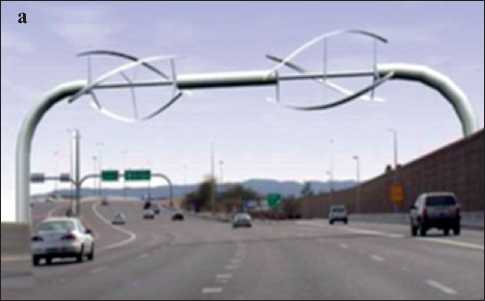
Fig. 4. Placement of wind turbines
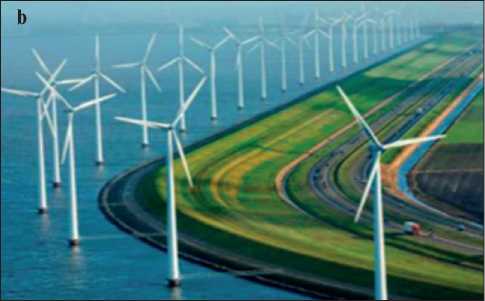
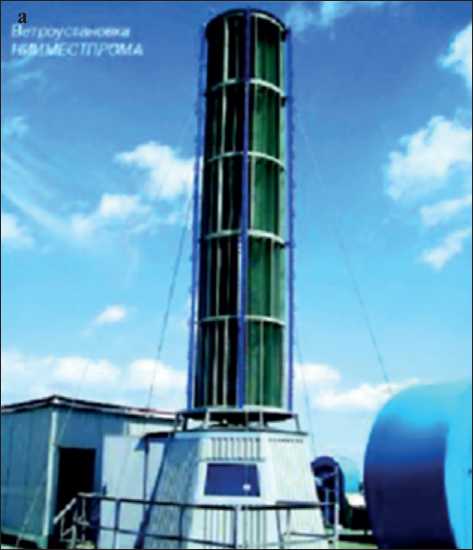
Fig. 5. Wind turbines with a vertical circuit
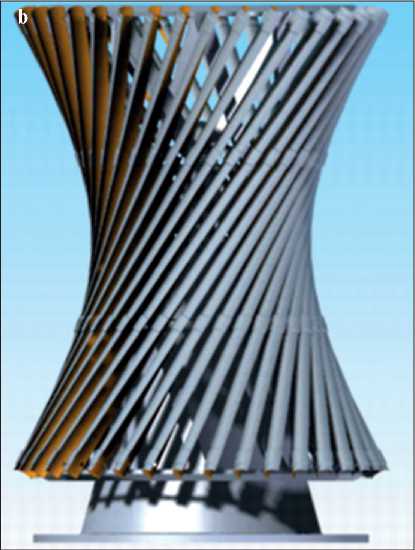
PROBLEMS OF USING NANOMATERIALS AND NANOTECHNOLOGY IN CONSTRUCTION
Table 1
Comparative data of wind turbines
firstly, effective work at low wind speeds (from 1 m/s and above);
secondly, heir wind resistance, because with increasing wind speed, stability increases (spinning top effect);
thirdly, work in any directions of wind speed;
fourthly, modular design, which allows you to gain the required power due to the number of modules;
fifth, the ability to work in stationary and mobile versions.
The technical and economic data of the listed wind generators (Table 1) indicate, firstly, the significant parametric advantages of the small-sized “Shukhovskaya” wind power generating turbine, and secondly, its competitive of quality price in comparison with vane and vertical rotary installations – almost an order of magnitude cheaper [28, 29].
Small-sized “Shukhovskaya” wind power generating turbine (PGT) with a capacity of 1 KW (Fig. 5b) for domestic use (design range 3.5 and 7 KW), has the following characteristics [29]:
-
a) the largest rotor diameter – 550 mm, height – 850 mm;
-
b) the mass of the unit is 43 kg, the mass of the rotor is 10.4 kg.
-
c) the line of contact of the active layer of the air flow washing the hyperboloid is 1.6 times longer than the similar line of the rotating cylinder of a rotary-type wind generator with straight blades, and therefore, the
efficiency of the wind turbine will be higher in proportion to the same value;
-
d) the total moment of inertia of the structure is determined as the sum of the products of the masses of material points by the value of the square of the length of the radius, that is
I = ∑ m n • R n 2
whence it follows that the moment of inertia at rest of the structure is at least twice less than the moment of inertia of the rotating cylinder of a wind turbine with straight blades, and, therefore, the required wind force at the moment of the start of movement is two times less, and also conditions of self-priming and self-support are created as in helicoidal turbines;
-
e) the constructive structure of the working body, combined with lightness, strength and balance, allows the installation units (gearbox, electric generator, etc.) to be placed inside the built-in volume, which reduces the dimensions and weight of the entire installation as a whole.
Thus, by installing PGT (Fig. 5b) on the roof ridge (Fig. 2) of an individual residential building (next to solar panels), we will get a duplicated system of its power supply.
Many patents of the Russian Federation are devoted to the production of water from atmospheric air [16–22]. However, from the point of view of the reliability of engineering systems of buildings, in particular, the water supply subsystem, the most effective is the use of a small-
PROBLEMS OF USING NANOMATERIALS AND NANOTECHNOLOGY IN CONSTRUCTION sized installation with a Venturi pipe (Fig. 6), which is a device for obtaining water from atmospheric air and generating electricity. The installation works as follows. Atmospheric air enters the outer vertical cylinder 7 and moves downward through the dry channel 9, cooling due to contact with the cold wall of the inner vertical cylinder 6 of the wet channel 10. Due to the evaporation of water from the hydrophobic capillary-porous surface 8 covering the inner side of the inner cylinder 6, the temperature in the lower part of its cold wall drops to a temperature close to the dew point temperature. In this case, condensation of moisture vapor contained in the atmospheric air occurs, drops of condensate of these vapors are collected on the droplet grid 12, and through the moisture drain plates 13 the condensate flow enters the water tank 14. A smaller part of this condensate is pumped through the pipeline 11 to the upper part of the hydrophobic surface 8 to wet it with water, and most of the condensate from the water tank 14 is fed to the consumer through the second pipeline for removing condensed fresh water 15. The cooled air flowing around the plates 13 turns and moves upward along the wet channel 10. Due to the evaporation of water into the air from the moist hydrophobic capillary-porous surface 8, covering the inner side of the inner vertical cylinder 6, the relative humidity of the air approaches 100%. In this case, when the humidified air moves along the wet channel 10, its mass increases and its density decreases. Therefore, the pressure of moist air at the exit from the wet channel 10 becomes lower than the pressure of atmospheric air, which increases the vacuum in the narrow section of the Venturi pipe 3. The increasing difference in atmospheric air densities at the entrance to the annular air nozzle 2 and in the narrow section of the Venturi pipe 3 provides an increase in the speed of the air flow in the dry 9 and wet 10 channels, and also leads to an additional acceleration of the air speed into tube of Venturi 3, that increase in the generation of electricity by the electric generator 4 [22].
Thus, the use of the PGT design, which, in addition to fresh water from the air, allows using a wind power plant with a horizontal wind wheel and an electric generator to also receive electricity, creates conditions for obtaining a “triple power supply system” of an individual residential building , as is customary at nuclear power plants [30], i.e. with a probability of failure not higher than 10–7. This means that over 100 years (8760 hours • 60 minutes • 100 years = 5.256 • 107 minutes), the permissible power outage will be 5.3 minutes!
It is appropriate to compare the reliability of the existing system of centralized power supply of the residential sector of cities and rural settlements, which is spelled out by law in Article 38 of the Federal Law-35 “On Electricity” [31]:
-
“1. Subjects of the electric power industry that ensure the supply of electrical energy to consumers of electrical energy,
-
2. The basis of the system for the reliable supply of electricity to consumers is a reliable power supply scheme and the fulfillment of all the requirements of the rules for the technical operation of power plants and networks , as well as the presence of specialized organizations on the retail markets – guaranteeing suppliers ”.
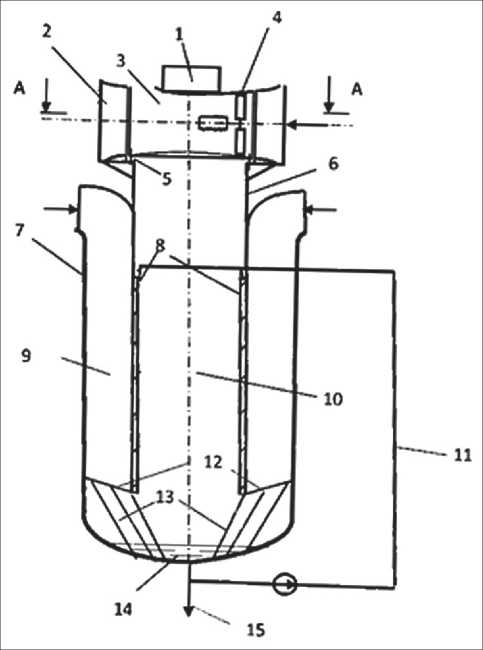
Fig. 6. Vortex water-wind power plant: 1 – air vane;
2 – stationary annular air nozzle; 3 – Venturi pipe;
4 – wind power plant with a wind wheel and an electric generator; 5 – bearing; 6 – inner vertical cylinder;
7 – outer vertical cylinder; 8 – hydrophobic capillary-porous surface; 9 – “dry” channel; 10 – “wet” channel; 11 – irrigation water pipeline with a pump;
12 – drip grid; 13 – plates of condensed moisture drain; 14 – water tank; 15 – fresh water outlet pipeline including energy sales organizations, guaranteeing suppliers and territorial grid organizations (within the limits of their responsibility), are responsible to consumers of electrical energy for the reliability of supplying them with electrical energy and its quality in accordance with the requirements of technical regulations and other mandatory requirements…
However, the Technical Regulations for the electric power industry do not exist – there is only Order of the Ministry of Energy of the Russian Federation of October 25, 2017 No. 1013 “On approval of requirements for ensuring the reliability of electric power systems, reliability and safety of electric power facilities and power
PROBLEMS OF USING NANOMATERIALS AND NANOTECHNOLOGY IN CONSTRUCTION receiving installations” Rules for organizing maintenance and repair of electric power facilities “, in which there is no specific value of reliability and safety for the system [32].
And the only document remains – GOST 32144-2013 [33], from which it follows (clause 4.3 Random events “and subclause 4.3.1” Voltage interruptions “) that “Accidental voltage interruptions are divided into long-term (duration more than 3 minutes) and short-term (duration no more than 3 minutes). The annual frequency of long voltage interruptions (lasting more than 3 minutes) largely depends on the characteristics of the power supply system (primarily, the use of cable or overhead lines) and climatic conditions . “
Therefore, taking into account the climatic conditions and almost 25% of losses in the existing “cable or overhead lines”, the minimum probability of a power outage is allowed – 5.7 • 10–6 (3 minutes / 8760 hours), and the maximum – 1.0 • 10–3 (9 hours / 8760 hours), if we take into account the following “permit for poor quality supply of electricity” [33]: “ A.2 Overvoltage. On average, about 30 overvoltage’s are possible at the point of connection per year.... The level of such overvoltage’s with significant non-symmetry of phase loads can reach the values of line voltage, and the duration – several hours ”(i.e. less than 10).
Thus, the reliability, safety and quality of power supply of the proposed replicated autonomous engineering system of an individual residential building (AES IRB) is at least 60 times higher than the centralized power supply of the residential sector, and taking into account overvoltages that are excluded in the triple system by nanotechnology of their suppression [6–8] – 10 800 times higher in AES IRB.
Duplication of the water supply subsystem of the AES IRB can be carried out with 4 domestic hydropanels (Fig. 7a), each of which can generate up to 5 liters of water per day. The hydropanel (heliothermal adsorption generator of atmospheric water) works on the principle of physical adsorption on a daily cycle: at night at a temperature of 20oC or less, the air flow passes through a nanoporous adsorbent (Fig. 7b), which selectively absorbs moisture from the air, and during the day solar energy heats up a selective screen, which transfers heat to the adsorbent, moisture is released from it, which condenses on the cold screen and flows from it into the collector [34].
It is advisable to organize the tripling of the engineering system of an individual residential building in terms of water supply using the “AQUAMATIC” installation (Fig. 8), in which air passing through an electrostatic filter (1) enters the condenser (2), where it is cooled to the dew point and the steam present in it turns into water. The water flows into the water collection tray (3), and, passing through the zeolite filter, enters the lower storage tank. Here the water undergoes the first ultraviolet sterilization. Then, the high pressure pump (4) pumps water through the filter system (5) and it enters the upper storage tank with a volume of 12.5 liters. (6), and from it into the tank (7) of cold water (temperature 4–10oС, volume 2 liters) and hot water (temperature 90–95oС, volume 1.8 liters). The performance of the installation (Fig. 8) depends on the humidity of the ambient air [35].
Calculations, by analogy with power supply, have shown that the reliability, safety and quality of the proposed AES IRB, in terms of water supply, is 10 000 times higher than centralized water supply and heat supply for the residential sector and 1000 times higher than borehole systems with combined gas water heating devices (GWHD).
Consequently, the place of nature-like technologies, alternative energy in particular, in the world energy sys-
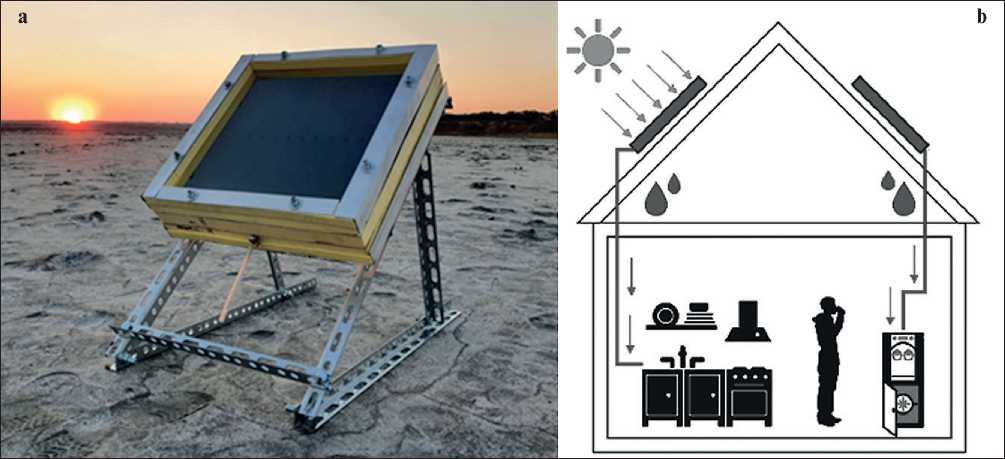
Fig. 7. Hydro panels of “ITR UNISORB” LLC
PROBLEMS OF USING NANOMATERIALS AND NANOTECHNOLOGY IN CONSTRUCTION
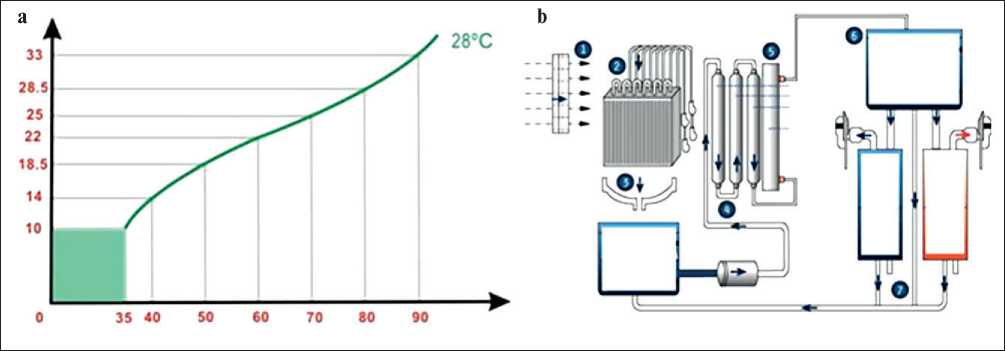
Fig. 8. Block diagram and performance diagram of “AQUAMATIC”:
1 – Electrostatic filter, 2 – Condenser, 3 – Lower tank with zeolite filter, 4 – Pump, 5 – Filter system, 6 – Upper water tank (12.5 L), 7 – Tanks: for cold water (2L, 4–10oС) and hot water (1.8 L, 90–95oС)
tems of various states, including in our country, becomes obvious. And it will remain to carry out a comparative analysis, but not the socio-economic efficiency of the proposed approach, as is customary in modern economic theories, but taking into account the self-organization of the received benefits and the harm produced (public, collective and private), that is, by the method of retro forecast of socio-economic losses in society, from the point of view of life safety (fire, environmental, etc.) [36, 37].
This will be done in a separate article and, it is pertinent to note that of all the unnatural-mathematical models of economics for which the Nobel Prizes in economics have been handed out over the past 45 years, will be used the method of intersectoral balance of a Russian scientist, Nobel laureate, foreign member of the Academy Sciences of the USSR Leontiev V.V., in the form of the Leontiev-Ford model adapted for these purposes [39], together with the models of retro-forecast of noosphere [38, 39].
CONCLUSION
An analysis of the directions and rates of development of renewable energy in the world has shown that these installations are unstable, low-concentrated and periodic sources, and therefore, their haphazard use is a serious mistake of scientists, specialists and politicians. Based on the analysis of engineering systems of multi-apartment residential buildings and individual residential buildings, as well as fire-energy and environmental damage resulting from their operation, nanotechnologies and Russian patents are proposed that implement nature-like technologies that allow solving the problems of autonomous electricity, water, heat supply of individual residential buildings. It is shown that the integration of “Shukhovskaya” and vortex wind turbines, hydraulic panels and solar panels makes it possible to create a replicated autonomous engineering system for individual residential buildings (AES IRB).
By duplicating and tripleting, the AES IRB can provide individual residential buildings with electricity, water and heat with quality, reliability and safety parameters that are several orders of magnitude higher than the existing centralized resource supply systems for cities and rural settlements.
The proposed approach, using the Leontief-Ford model and the retro-forecasting method, will allow in the future to accurately determine the place of the so-called renewable energy in the structure of the resource supply system for cities and rural settlements.
Список литературы Synthesis of life support nanotechnologies into a replicated autonomous engineering system of an individual dwelling house
- Standartinform. SP 253.1325800.2016. Engineering systems of high-rise buildings. Moscow: 2017.
- Perikov A.V. System analysis and nanotechnology of safety in engineering systems of residential high-rise buildings. Nanotechnologies in Construction. 2018; 10(2): 114–130. https://doi.org/10.15828/2075-8545-2018-10-2-114-130.
- Belozerov V.V., Voroshilov I.V., Denisov A.N., Nikulin M.A., Oleinikov S.N. Nanotechnology of “intellectualization” of energy accounting and suppression of fire and energy harm in engineering systems of residential buildings. Part II Nanotechnologies in Construction. 2021; 13(3): 171–180. https://doi.org/10.15828/2075-8545-2021-13-3-171-180.
- Ministry of Emergencies of Russia. SP 8.13130. Fire protection systems. External fire water supply. Fire safety requirements. 2020.
- Ministry of Emergency Situations of Russia. SP 10.13130. Fire protection systems. Internal fire-fighting water supply. Standards and design rules. 2020.
- Belozerov V.V., Belozerov Vl.V., Dolakov T.B., Nikulin M.A., Oleinikov S.N. Nanotechnology of “intellectualization” of energy accounting and suppression of fire and energy harm in engineering systems of residential buildings. Part I Nanotechnologies in Construction. 2021; 13(2): 95–107. https://doi.org/10.15828/2075-8545-2021-13-2-95-107.
- Belozerov V.V., Oleinikov S.N. Method for determining fire and electrical harm and hazardous fire factors using an electric meter-detector. RF Patent 2622558. 2017-06-16.
- Belozerov V.V. “Intelligent” ventilation and air conditioning system in apartments of multi-storey buildings and in individual residential buildings with nanotechnology for protection against fires and explosions. Nanotechnologies in Construction. 2019; 11(6): 650–666. https://doi.org/10.15828/2075-8545-2019-11-6-650-666.
- Belozerov V.V, Dolakov T.B, Belozerov Vl.V. About safety and prospects of electric heating in individual residential houses. Modern high technology. 2017; 11: 7–13.
- Belozerov V.V., Dolakov T.B., Oleinikov S.N., Perikov A.V. Synergetics of life safety in the residential sector. Moscow: Publishing house of the Academy of Natural Sciences; 2017. DOI: dx.doi.org/10.17513/np.283.
- Belozerov V.V. On the cognitive model of safety management of objects with mass presence of people (based on the results of the examination of the fire of the Turgenevsky market). Security Issues. 2018; 5: 35–62. DOI: dx.doi.org/10.25136/2409-7543.2018.5.27485.
- Elistratov V. V. Renewable energy. 3rd ed. add. SPb.: Publishing house. Polytechnicnical University; 2016.
- Armless P.P., Armless P.P. (Jr.), Gribkov S.V. Wind power: Reference and methodological publication. Under the general editorship of P.P. Handless. Moscow: “Intekhenergo-Izdat”, “Teploenergetik”; 2014.
- Wind power generator their efficiency, advantages and disadvantages. Available from: https://voltobzor.ru/poleznyestati/vetryanoj-elektrogenerator-vetryaki-ix-effektivnost-preimushhestva-i-nedostatki [Accessed 25th December 2021].
- Order of the Government of the Russian Federation of April 30, 2021 No. 1152-r “On gasification of the constituent entities of the Russian Federation” [Electronic resource]. Available from: https://www.garant.ru/products/ipo/prime/ doc/400640027/ [Accessed 25th December 2021].
- Serebryakov R.A., Dorzhnev S.S., Bazarova E.G. Vortex installation for condensation of moisture from atmospheric air. RF Patent 2683552. 2018-06-29.
- Dorzhnev S.S., Bazarova E.G., Izmailov A.Yu., Pimenov S.V. Method and installation of fire-fighting water supply for arid regions. RF Patent 2686195. 2018-09-08.
- Biryuk V.V., Sheludko L.P., Gorshkalev A.A., Shimanov A.A., Belousov A.V., Gallyamov R.E. Device forobtaining water from atmospheric air and generating electricity. RF Patent 2620830. 2016-03-09.
- Antufiev I.A. Device for obtaining water in the desert. RF Patent 2526628. 2014-08-27.
- Romanovsky V.F., Romanovsky A.V. A method for extracting water from air and a device for its implementation. RF Patent 2081256. 1997-06-10.
- Alekseev V.V., Rustamov N.A., Chekarev K.V. Installation for obtaining fresh water from atmospheric air. RF Patent 2131000. 1999-05-27.
- Aristov Yu.I., Okunev A.G., Parmon V.N. A method of obtaining water from air. RF Patent 2272877. 2006-03-27.
- Belozerov V.V., Reisenkind Ya.A., Rudkovskaya L.M., Khaishbasheva S.V., Fridman I.M., Belozerov Vl.V. Methods for assessing fire hazard and reliability of an electrical heating device (EPO). Rostov-on-Don: EVAN; 2004.
- An induction boiler is the best source of electric heat for heating systems. Available from: https://zen.yandex.ru/media/rmnt/indukcionnyi-kotel-luchshii-istochnik-elektrotepla-dlia-otopitelnyh-sistem-5d2c7285fe289100adeaae7d [Accessed 25th December 2021].
- Belozerov V.V., Mikhalchuk A.N., Fomichev V.T., Goryachev O.N.et al. Recommendations for the construction of electrically heated floors and panels. Zernograd: VNIPTIMESH; 1986.
- Nikolaev S.V. Water heat-insulated floor with steel character. Industrial electric heating and electric heating. 2015; 2: 68–71.
- Smirnov A.N. Wind power plants. Realities and prospects. Available from: http://www.niimestprom.ru/?id=1232 [Accessed 25th December 2021].
- Smirnov A.N. Report on the creation of wind power plants. Available from: http://www.niimestprom.ru/?id=1231 [Accessed 25th December 2021].
- Law of the Nizhny Novgorod region of 26.04.2007 “On approval of the agreement between the Government and JSC” Scientific Research Design and Technological Institute of Local Industry “NIIMESTPROM” No. 413-P/1. Lobbyist. 2007; 6: 36–39.
- Federal regulations and regulations in the field of use of atomic energy general provisions of providing the safety of nuclear power plants. OPB-88/97. NP-001-97 (PNAE g-01-011-97). Available from: https://normativ.kontur.ru/document?moduleId=1&documentId=97305 [Accessed 25th December 2021].
- Federal Law No. 35 of March 26, 2003. On the Electricity Industry (as amended on 06.11.2021). Available from: http://www.consultant.ru/document/cons_doc_LAW_41502/ [Accessed 25th December 2021].
- Order of the Ministry of Energy of the Russian Federation of October 25, 2017 No. 1013 “On approval of requirements for ensuring the reliability of electric power systems, reliability and safety of electric power facilities and power receiving installations” Rules for organizing maintenance and repair of electric power facilities “(Registered with the Ministry of Justice of Russia on 26.03.2018 N 50503, as revised on 13.07.2020). Available from: https://www.garant.ru/products/ipo/prime/doc/71807490/ [Accessed 25th December 2021].
- GOST 32144-2013. Electrical energy. Electromagnetic compatibility of technical means. Electricity quality standards in general-purpose power supply systems. 2014. Available from: https://files.stroyinf.ru/Index/ 54/54884.htm [Accessed 25th December 2021].
- Menshchikov E., Strizhenov E., Chugaev S., Shkolin A. Autonomous systems for generating drinking water. Available from: https://s3.dtln.ru/unti-prod-people/file/presentation/project /87if11tp96.pdf [Accessed 25th December 2021].
- Atmospheric water generator AQUAMATIC. Available from: https://dmsht.ru/voda-iz-vozduha-atmosfernyygenerator/ [Accessed 25th December 2021].
- Belozerov V.V., Oleinikov S.N. Retro forecast of fires and their consequences as a method for assessing the effectiveness of innovations in the field of fire safety. Security Issues. 2017; 5: 55–70. DOI: dx.doi.org/10.25136/2409-7543.2017.5.20698.
- Belozerov V. Synergetics of safe life. Rostov-on-Don: SFedU; 2015.
- Leontiev V., Ford D. Interindustry analysis of the impact of the structure of the economy on the environment. Economics and Mathematical Methods. 1972; 8(3): 370–399.
- Belozerov V.V., Gavrilei V.M., Topolsky N.G. Synergy systems of noosphere security. Moscow: AGPS EMERCOM of Russia; 2020.

